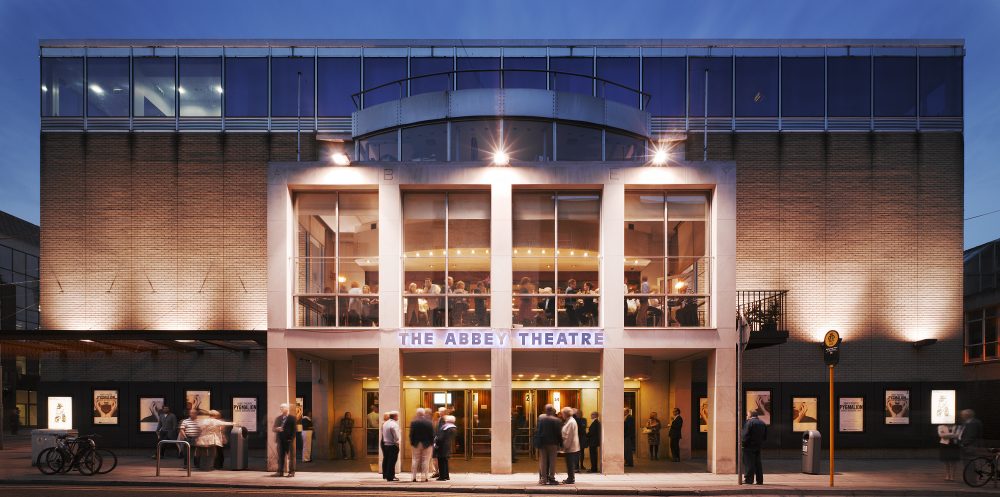A Space for Irish Artistry: The Founding of the Abbey
The Abbey Theater was originally established as the Irish Literary Theater, founded in 1899. Its founders, William Butler Yeats and Isabella August, Lady Gregory, established the theater as a place to encourage Irish poetry and drama. It changed ownership in 1902 and became the Irish National Theater Society one year later. The theater provided a space for the development of Irish actors and writers and attracted literary giants within the Irish Literary Renaissance. Since its establishment, the Abbey has been known for its high quality and politically charged performances that question what it means to be Irish and what it means to be a nationalist. The Abbey developed as a lab for transformation, and its stage played out night by night different iterations Ireland may have taken on, depending on the interference of the people. Performances at the Abbey were, and still are, as varied as the opinions of its managers. The quality of the company’s work garnered the attention of Annie Horniman in 1904, and she funded the conversion of a theater on Abbey Street into the Abbey Theatre as it is known today. The theater opened that year with plays by its founders, Yeats, Lady Gregory, and newcomer John Millington Synge. (Abbey Theatre)
The original Abbey Theatre in Dublin, Ireland before it burned down in 1951¹
Politics and Personal Strife: Close Calls
Following its opening, the Abbey continued to stage provocative dramas. Many of these dramas, such as Synge’s The Playboy of the Western World, delved into the harsh realities of Irish peasantry. Synge’s work elicited riots when it premiered in 1907 and had the same effect on American audiences when it opened in the US. Difficulties continued for the Abbey following this incident. Up until this point, Irish audiences were accustomed to simple dramas portraying Ireland and its people in a wholly positive light. Synge’s work, which drew heavily on the wit, quirkiness, and sometimes lewdness or moral reprehensibility of Irish peasants was completely new.
The founders had often conflicting approaches to theater. The Fay brothers took their Irish nationalist work to the US after clashing with Yeats’ more artistic interpretations of the medium. Horniman, the Englishwoman who had funded the purchase and renovation of the theater withdrew her support and the theater struggled to maintain a consistent managerial team. Issues for the company continued to arise as World War I shook Europe and the Easter Rising of 1916 nearly brought about its close. However, stability finally arrived in 1924 as the Abbey became subsidized by the state. The Abbey’s success continued during the 20th century, until a fire necessitated the relocation of the company. Reconstruction was completed in 1966 and the Abbey theater continues to celebrate Irish works as well as plays from other countries. (Abbey Theatre)
- Front. “The Abbey Today.” Abbey Theatre- Amharclann Na Mainistreach. Abbey Theatre, 12 Nov. 2015. Web. 27 Apr. 2017.


